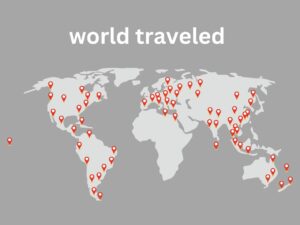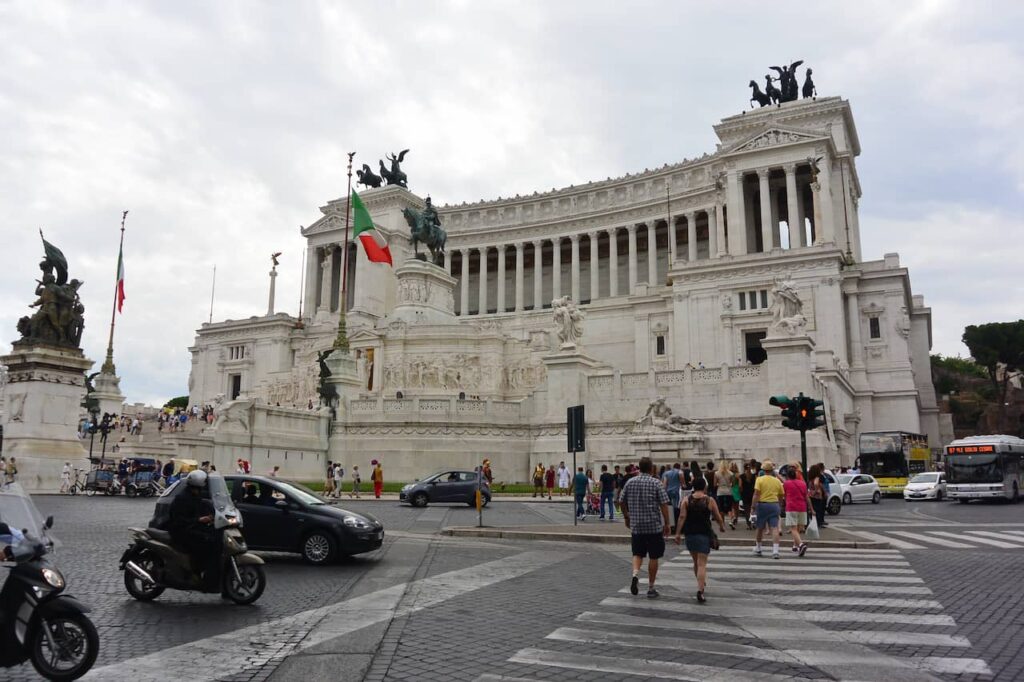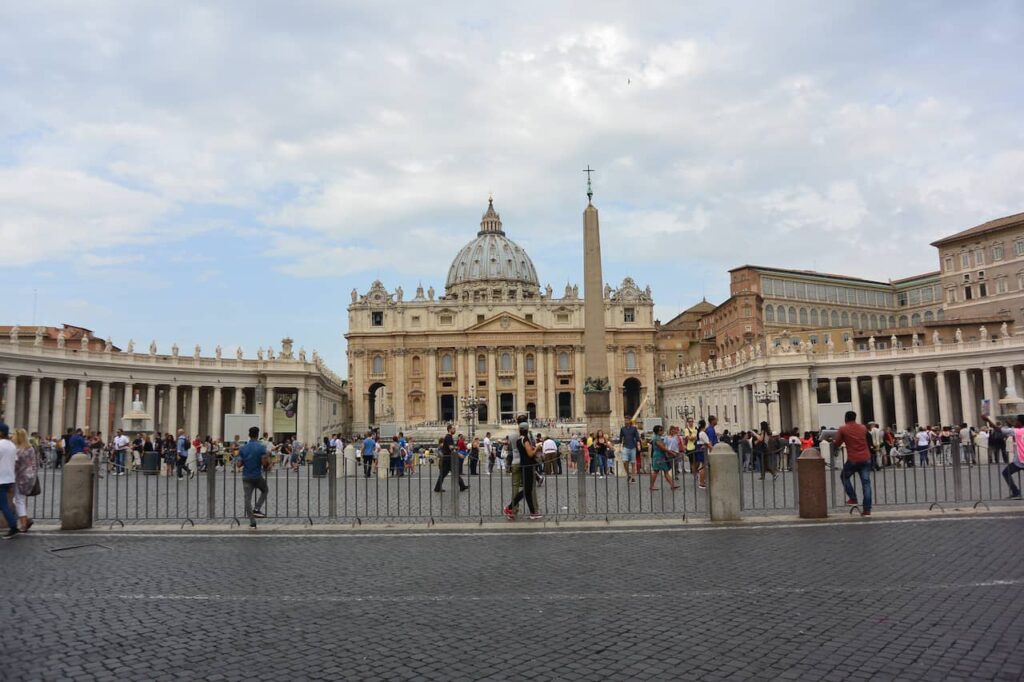The first civilization in Italy was the Etruscan, which emerged around 800 BC in central Italy.
They built many cities, some still exist today, including Arezzo, Chiusi, Cortona, Perugia, and Cerveteria.
The Etruscans were engineers who drained swamps and built roads, they were artists who made terracotta sculptures and worked in bronze.
The Etruscan civilization was influenced by the Greeks, with whom they traded.
Around 750 BC, the Greeks established a colony on the island of Ischia in the Bay of Naples. Later they created colonies in Sicily such as Catania and Messina. Around 600 BC, the Etruscans came to rule central Italy, including Rome. The last Etruscan city fell to the Romans in 265 BC.
The rise of Rome.
The settlement in Rome in the 6th century BC was ruled by Etruscan kings, however, in 510 BC the Romans rebelled and expelled the last king Tarquinius Superbus.
Rome was an aggressive and expansionist state and central Italy. In 396 they conquered the important Etruscan city of Veios. However, in 390, the Gauls captured and sacked Rome. Subsequently, Rome recovered and conquered southern Italy. By 272 BC almost all of southern Italy was in Roman hands.
Rome then came into conflict with Carthage. Which had become very powerful, ruling North Africa, Sardinia, Corsica, and part of Spain. The wars between Rome and Carthage are called the Punic Wars.
The first lasted from 264 to 241 BC and was primarily a naval war. It ended with the Romans capturing Sicily. Shortly afterward they also occupied Sardinia and Corsica.
The Second Punic War lasted from 218 to 202 BC. In 2018, Hannibal marched a large army, including elephants, from Spain, through southern France, and across the Alps to Italy. He defeated the Romans in several battles.
However, he lacked the resources to completely destroy Rome and the Romans sent an army which won a decisive battle at Zama in 202 BC.
The Romans expanded northwards and by 90 BC, all of northern Italy was in Roman hands.
Prisoners of war were made slaves and therefore there was a large influx of slaves into Roman territory.
Many Romans grew rich using slave labor, but this also caused major slave revolts.
As problems increased the Romans relied on great generals
In 83 BC Sulla became dictator. He ruled until 80 BC. Then, in 67 BC, another powerful general, With Seu Pompey, undertook a successful campaign against pirates in the Mediterranean. In 66-62 BC he added parts of Turkey, Syria, and the surrounding area to the Roman Empire. In AD 60 he formed a triumvirate with two other men, Crassus and Julius Caesar. The triumvirate lasted only about a year but was renewed in 56 BC. However, Crassus died in 52 BC and Pompey was made sole consul.
Meanwhile, the third member of the triumvirate, Julius Caesar conquered Gaul. His military victories made him very popular with his men. However, in 49 BC, the Senate voted that Caesar should give up command of the army and return to Rome without his troops. Caesar refused and instead marched on Rome. Lacking troops to defend the city, Pompey fled to Greece to raise an army. Caesar followed and defeated him. Pompey fled to Egypt, where he was assassinated. Julius Caesar was the dictator of Rome until 44 BC when he was assassinated.
After his death, another triumvirate took power. It was composed of Marcus Antonius (Mark Anthony), Marcus Lepidus, and Gaius Octavius (Octavian), the great-nephew of Julius Caesar. Lepidus was deposed in 36 BC and Octavian and Mark Antony soon fell. Octavian defeated Mark Antony at the naval battle of Actium in 31 BC. Octavian became the first Roman emperor.
Italy Under the Roman Empire.
Augustus retained the Senate but retained actual power. He controlled the army and the civil service. Augustus managed to restore order to the Roman Empire and when he died in AD 14 he was peaceful and prosperous.
Claudius (41-54 AD) the Romans conquered Britain. Next came Nero (54-68). Vespasian (69-79) built the Colosseum and under Trajan (98-117) and Hadrian (177-138) the Roman Empire was at its height.
In 2012, Emperor Caracalla granted Roman citizenship to all free people in the empire. From there the empire was beginning to decline.
When Emperor Severus Alexander was assassinated in 325, there were decades of political instability. Between 235 and 284 there were 22 emperors. Order and prosperity were temporarily restored by Diocletian (284-305). He abdicated in 305 and there was a struggle for succession. Constantine was proclaimed Emperor in 306 but was not in complete control of the empire until 324.
Diocletian divided the empire into two halves, western and eastern. Constantine united them in 324, but they broke up again after his death. Gradually, there was less and less cooperation between the two halves. In the Western Roman Empire, there was a relentless economic decline with rampant inflation. Meanwhile, the Germanic tribes across the border were growing stronger.
the Germanic people invaded Gaul and in 407 the Roman army left Britain. Then, in 410 Alaric Goth captured Rome. However, the Roman Empire survived for some time afterward.
Finally, in 476, the last Roman emperor in the west was deposed. A German named Odoacer became king of Italy.
Italy in the High Middle Ages.
However, for most people in Italy, life went on as normal. Germanic kings respected Roman culture and laws.
Meanwhile, the eastern half of the Roman Empire was still flourishing. In 535, the Byzantine Emperor Justinian sent an army into Italy under the command of his general Belisarius. Thus began a long period of war that devastated much of Italy.
Italy in the 19th century.
The ancient kingdoms were restored, but the republics of Venice and Genoa were not. Genoa was taken by Piedmont. However, there was a lot of discontent in Italy and many people joined secret societies like the Carbonari. In 1820, the Carbonari led a rebellion in Naples. They led another rebellion in Piedmont in 1821. However, the Austrians intervened to crush both rebellions. In 1831 there were other rebellions in Italy, but these were also suppressed by the Austrians.
Enter Giuseppe Mazzini (1805-1872). Mazzini was a great Italian nationalist and did much to popularize the idea of a united Italy. Mazzini became involved in the rebellion in Piedmont in 1831 and was forced to flee to France, where he formed an organization called Young Italy. From 1837 Mazzini lived in Britain, where he continued to fan the fires of nationalism in Italy.
Then, in 1848, revolutions broke out EVERYWHERE. The first was in Palermo, in January. The King of Naples was forced to grant a constitution. In March, public pressure forced the King of Piedmont to grant a constitution. Also in March 1848, Venice became an independent republic again. The King of Piedmont decided to seize Lombardy from the Austrians and declared war. Another army was sent from Naples. Meanwhile, Giacomo Durando commanded the army of the Papal States. The Pope ordered him to defend the frontier. However, he exceeded his orders by marching to fight the Austrians.
However, in the fall of 1848, the Pope was forced to flee his home. Rome became a republic. His army was led by Giuseppe Garibaldi (1807-1882). Unfortunately, the French sent an army to crush the Roman Republic and restore the Pope. In March 1849, Piedmont went to war with Austria again but was quickly defeated at Novara. The king of Piedmont abdicated in favor of his son.
War with Austria started in 1859 and the French won the battles of Magenta and Solferino. However, Napoleon III, fearing Prussian intervention, decided to end the war. Without consulting Cavour, he made peace with Austria on 11 July 1859. As a result of the peace, Piedmont received Lombardy. This was far less than Cavour had expected and he resigned rather than accept peace. He became prime minister in January 1860.
However, the Italians themselves decided their future. The peoples of Romagna, Modena, Parma, and Tuscany demanded unification with Piedmont. In 1860, Cavour organized referenda in these states. All voted to join Piedmont. However, to obtain Napoleon III’s agreement, Cavour was obliged to give him Savoy and Nice.
But the Austrians still controlled Venice. In 1866, Italy joined Prussia in a war with Austria. The Italians were defeated in a land battle at Novara and a naval battle at Lissa. However, Prussia won the war. Then Italy won Venice.
Modern Italy.
In 1908, Sicily suffered a terrible earthquake. Around 75,000 people died in and around Messina. Then, in 1911-1912, the Italians conquered Libya.
After the war, Italy gained Trieste and South Tyrol.
Meanwhile, in 1919, Mussolini founded a fascist movement that grew rapidly and in May 1921, 35 fascist deputies were elected.
On October 28, 1922, a force of Fascists marched on Rome (although Mussolini remained in Milan in case something went wrong). At first, the king planned to use the army to resist the fascists.
However, he changed his mind and invited Mussolini to be prime minister. Mussolini traveled from Milan and arrived in Rome to take office on 29 October 1922.
Gradually Mussolini strengthened his grip on Italy and in 1923, formed the Fascist militia as an “auxiliary” army when the Roman Catholic Church supported making religious education compulsory in primary schools.
After several political crises in 1929, the Fascists made a deal with the Roman Catholic Church. The Vatican became a sovereign state and, in Italy, religious education was extended to secondary schools.
In the 1930s, Italy suffered from a worldwide depression, with fascists increasing public spending, with the northern states improving, but southern Italy remained very poor.
Crime increased and starting in 1925, Mussolini campaigned to make Italy self-sufficient in grain.
The so-called grain battle although it has increased production, the land is not good for growing grains but for olives and grapes.
When World War II began in 1939, Italy remained neutral. However, in 1940, Germany invaded Norway, the Netherlands and Belgium and invaded France. Like a vulture, Mussolini declared war on Britain and France on June 10, 1940, hoping to gain overseas territories from them. However, when Italian forces attacked France, the French army easily kept them in check.
However, in May 1941, the British liberated Ethiopia from the Italians. Meanwhile, in November 1940, the British utterly defeated the Italian navy at Taranto.
Italy surrendered on September 8, 1943. On September 9, the Allies landed at Salerno.
When World War II began in 1939, Italy remained neutral. However, in 1940, Germany invaded Norway, the Netherlands, and Belgium and invaded France. Like a vulture, Mussolini declared war on Britain and France on June 10, 1940, hoping to gain overseas territories from them. However, when Italian forces attacked France, the French army easily kept them in check.
However, in May 1941, the British liberated Ethiopia from the Italians. Meanwhile, in November 1940, the British utterly defeated the Italian navy at Taranto. Italy proved to be a broken reed. Ordinary Italian soldiers were not interested in Mussolini’s silly dream of a “new Roman Empire”. Around 1940, Italy suffered from air raids. In 1943, 60% of Italy’s industrial production was destroyed by bombing.
Italy surrendered on September 8, 1943. On September 9, the allies landed at Salerno. The Germans then sent troops into Italy. On September 11th they captured Rome. They also kidnapped Mussolini and made him the puppet ruler of northern and central Italy, which they called the Republic of Salo.
The Allies controlled southern Italy but advanced slowly. They captured the monastery of Montecassino in May 1944 and entered Rome on June 4, 1944. Meanwhile, the Germans retreated north. Like the Allied army, the Germans faced a force of Italian partisans acting behind their lines. In 1945, guerrillas liberated Milan, Turin, and Genoa. They also captured Mussolini and shot him on April 28, 1945. The German army in northern Italy surrendered on May 2, 1945.
In May 1946, the King of Italy, Victor Emmanuel, abdicated in favor of his son. However, on June 2, 1946, a referendum was held and the majority of Italians voted for the republic. The first constitution came into force on January 1, 1948. The first president of Italy was Luigi Einaudi.
From 1949 to 1953, Italy was helped by US Marshall Aid. Furthermore, in the 1950s and early 1960s, Italy experienced an “economic miracle”. Italian industry boomed and living standards rose sharply. However, there was still acute poverty in southern Italy and many southern Italians migrated north in search of jobs.
However, labor unrest in Italy subsided in the early 1970s when wages rose rapidly and the government introduced some reforms. (In 1965, less than 50% of households had a TV. In 1975, the number was 92%). Also, some reforms were introduced in Italy. In 1970, a new law allowed divorce. (The measure was approved by referendum in 1974).
Unfortunately, in the 1970s, Italy suffered from terrorism from both the right and the left. In 1978, left-wing terrorists kidnapped and murdered the leader of the Christian Democrats, Aldo Moro. In 1980, a bomb planted by fascists killed 84 people at Bologna train station. Fortunately, in the early 1980s, terrorism declined.
In the early 1980s, Italy, like the rest of the world, suffered a recession. However, in 1983 it ended and the decade was one of prosperity for most (not all) Italians. Poverty persists in the South.
Today, northern Italy is highly industrialized, but the south is still relatively poor. Italy also has an important fishing industry. Wine is also an important export. However, in recent years, service industries such as tourism, education, and finance have become the most important in Italy. In 2022, Italy’s population was 60 million.




